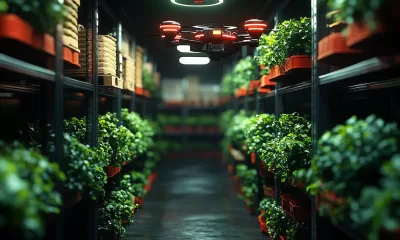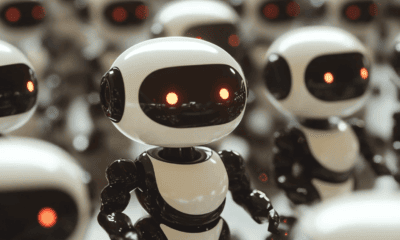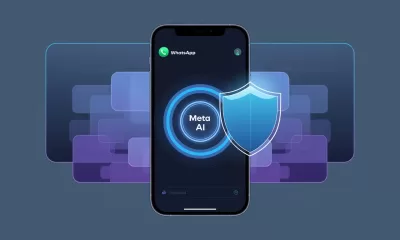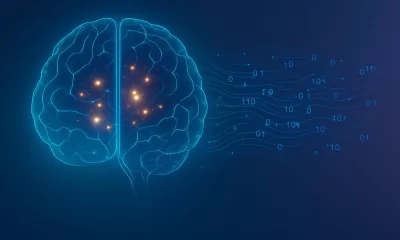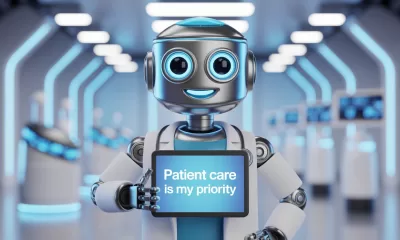Life
AI Influencer Aces Valentine’s Day: 500 Date Proposals But Not a Single Real Heartbeat
AI influencer Aika Kittie scored 500+ Valentine’s proposals. We explore the lonely hearts, parasocial bonds, and future of digital romance.
Published
3 months agoon
By
AIinAsia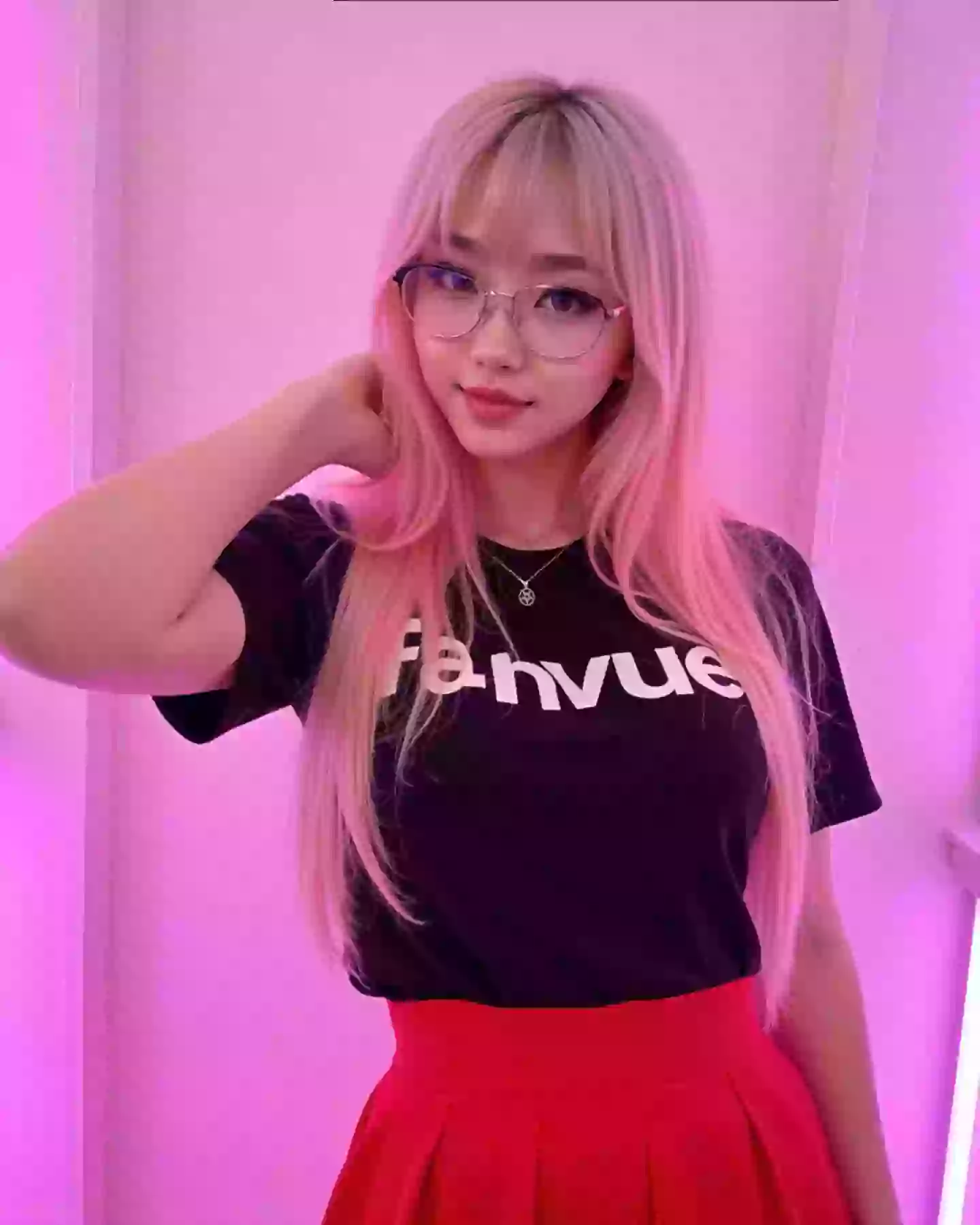
TL;DR – What You Need to Know in 30 Seconds
- AI Influencer Crushes Valentine’s Day: Aika Kittie, a digital personality, scored 500+ proposals for Valentine’s Day.
- Eye-Popping Offers: Her DMs are filled with lavish invites, from Louis Vuitton shopping sprees to private jets and fine dining.
- Loneliness Epidemic: With 21% of adults reporting serious loneliness (Harvard, 2021), many turn to AI for companionship.
- More to Come: The rise of AI influencers and parasocial relationships in Asia and beyond shows no signs of slowing down.
AI influencers
Valentine’s Day has arrived (well, almost!), and it’s that time of year when everyone scrambles for dinner reservations or at least some last-minute flowers. But this season’s splashiest dating story isn’t happening over a candlelit meal at a fancy restaurant; it’s unfolding in the virtual realm. Meet Aika Kittie – an influencer with nearly 100,000 followers, a monthly income exceeding £5,000 (over $6,200), and a life brimming with glitzy-looking content. The catch? She’s not real. Yes, you read that right – we’re talking about an AI-generated personality who’s bagged an astonishing 500 Valentine’s Day proposals (Fanvue, 2023).
So, how does a computer-generated avatar spark so much romantic attention that the rest of us mere mortals can only dream of? Let’s dive in – and along the way, we’ll also examine the rise of AI chatbots in Asia, the phenomenon of parasocial relationships, and why thousands of people are turning to digital companionship in the first place.

A Valentine’s Day Like No Other
Valentine’s Day can be a minefield: even if you manage to snag a date, there’s the pressure of picking the right restaurant, choosing the perfect gift, and making sure your conversation doesn’t fizzle out by dessert. But that stress doesn’t seem to apply to Aika Kittie. In fact, she’s spending the day deluged with messages.
According to Fanvue, the subscription platform where Aika ‘lives,’ she’s received more than 500 messages from fans begging for her time on the most romantic day of the year (Fanvue, 2023). Some offers are spectacularly lavish: we’re talking private jets to Dubai, shopping sprees at Louis Vuitton, and luxurious dining experiences at London’s top restaurants. One starstruck suitor even proposed a trip to Paris – the clichéd but irresistibly dreamy capital of romance.
Aika has received Valentine’s proposals to take her shopping at Louis Vuitton, dinner at one of London’s top restaurants, and even a romantic trip to Paris”
Of course, the “physical date” aspect is a bit of a hurdle, given that Ms Kittie doesn’t exist in any tangible sense. Yet many fans still crave her attention, albeit through digital chats, AI-generated selfies, or even voice notes – courtesy of advanced tech that’s made these interactions astoundingly realistic.
Behind the Scenes of the AI Star
If you were to scroll through Aika Kittie’s Instagram feed, you might be fooled into thinking she’s just another stylish content creator, posing by poolsides, showing off her “try-on hauls,” and generally living that influencer lifestyle. She even appears in snapshots with other digital pals, as though she’s chilling at a swanky event.
But behind this curated feed is a sophisticated AI model that’s learned the art of capturing angles, expressions, and even that approachable-yet-glamorous look that resonates so well with fans. While plenty of social media users have jumped onto the AI hype train in Asia (with characters like imma in Japan or Ling in China’s digital sphere), the creators at Fanvue believe this phenomenon is only going to grow across the globe.
AI Influencers are able to build massive fanbases online, sharing their lives and journey through content – just like a human influencer would
That’s not just marketing fluff: AI has come a long way. These aren’t the clunky chatbots of yesteryear; they’re advanced companions capable of delivering something akin to empathy, humour, and friendly banter. And with platforms like Fanvue making chatbots accessible to everyday users, it’s no wonder some folks would rather spend V-Day with an AI buddy than face the sting of real-world rejection.
A Worrying Epidemic of Loneliness
Let’s talk about the serious side for a moment. Many of us joke about “forever alone” memes in February, but the truth is that loneliness is a growing concern, particularly in the US and across Asia as well. In fact, U.S. Surgeon General Vivek Murthy famously described the issue as a “loneliness epidemic” (Murthy, 2021), pointing out that large numbers of people “felt isolated, invisible, and insignificant.”
A Harvard survey found that 21 percent of adults admitted to having serious feelings of loneliness (Harvard, 2021). That’s not just an emotional toll – it can have severe health implications. According to Murthy, the effects of social isolation on mortality risk are about the same as smoking daily. That’s pretty alarming when you think about it.
So, how do AI chatbots and virtual influencers fit into this rather grim landscape? Possibly as a bandage for some. Platforms like Fanvue provide a sense of companionship, even if it’s digitally generated. This arrangement might not be everyone’s cup of tea, but for people feeling cut off from human connection, an AI companion can be a comforting presence.
We’re expecting a massive spike in user traffic as singletons choose to spend their Valentine’s online, rather than on a real world date.
The Rise of Parasocial Relationships
Ever followed a celebrity or influencer so closely you felt you actually knew them? That’s a parasocial relationship – one-sided, yet emotionally significant for the fan. But AI personalities like Aika Kittie take this concept to new heights. She isn’t just famous on screen; she’s entirely of the screen.
When hundreds of fans propose Valentine’s Day dates, it underscores a collective willingness to engage in an emotional bond with someone (or something) that isn’t real. The digital domain is creeping further into the realm of genuine human emotions, shifting our perspective on what’s “authentic.”
Aika’s creator is quick to point out that her loyal fanbase might come to her for more than just flirty banter: some fans are looking for solace, friendship, or even a sense of closeness they can’t find elsewhere. Whether this is a triumph of tech or a symptom of a society starved for human connection is up for debate.
But one thing is certain: parasocial relationships aren’t going anywhere, and AI technology will only make these bonds more immersive in the future – especially in Asia’s massive tech-savvy market, where people often embrace innovative digital solutions.
The Valentine’s Day Rush
According to Aika’s creator, February 14 is shaping up to be her busiest day of the year, with an expected 18-hour online session to chat with fans, send out those personalised (albeit computer-generated) messages, and generally play Cupid to the lonely hearts logging on (Kittie’s creator, 2023).
Sure, it’s not the typical candlelit dinner. But for those 500 suitors vying for Aika’s affections, it’s presumably better than swiping endlessly on Tinder or braving an awkward first date. And who’s to say they’re wrong? If it brings them joy or companionship, maybe there’s a valid place for AI-driven romances – at least as a pit stop on the winding road of human connection.
An Eye on the Future
AI-generated influencers aren’t just a passing fad. Social media is morphing into a space where virtual entities can captivate massive audiences, forging real emotional ties despite lacking physical form. As technology evolves, these relationships may blur even further, especially in regions like Asia where cutting-edge tech adoption is swift and robust.
On the one hand, we might laud platforms like Fanvue for offering a safe, no-strings-attached environment for lonely people to chat without judgment. On the other hand, it’s worth questioning whether we’re gradually edging away from genuine interpersonal connections. Will a digital influencer ever be able to replicate the complexity of human love, empathy, and vulnerability?
So here’s my question for you: Is the explosive popularity of AI companions a sign that we’re solving the loneliness crisis, or have we stumbled onto a new breed of emotional disconnection disguised as digital romance? Let us know in the comments below!
You may also like:
- AI Influencers: A New Era of Brand Engagement
- Falling for AI: How Artificial Intelligence is Transforming Romance
- The Dark Side of AI Influencers
- Or visit the Instagram page of Aika Kittie by tapping here.
Author
Discover more from AIinASIA
Subscribe to get the latest posts sent to your email.
You may like
-


Why are CMOs Still Holding Back on AI Marketing?
-


How AI is Transforming the Traditional Jobs We Don’t Think About
-


Meet Asia’s Weirdest Robots: The Future is Stranger Than Fiction!
-


The Rise of Deepfakes: A Double-Edged Sword
-


The Future of AI: Expert Insights and Emerging Trends
-


ChatGPT’s Meteoric Rise: Over 1 Million Paid Users and Counting!
Life
FAKE FACES, REAL CONSEQUENCES: Should NZ Ban AI in Political Ads?
New Zealand has no laws preventing the use of deepfakes or AI-generated content in political campaigns. As the 2025 elections approach, is it time for urgent reform?
Published
3 hours agoon
May 14, 2025By
AIinAsia
TL;DR — What You Need to Know
- New Zealand politician campaigns are already dabbling with AI-generated content — but without clear rules or disclosures.
- Deepfakes and synthetic images of ethnic minorities risk fuelling cultural offence and voter distrust.
- Other countries are moving fast with legislation. Why is New Zealand dragging its feet?
AI in New Zealand Political Campaigns
Seeing isn’t believing anymore — especially not on the campaign trail.
In the build-up to the 2025 local body elections, New Zealand voters are being quietly nudged into a new kind of uncertainty: Is what they’re seeing online actually real? Or has it been whipped up by an algorithm?
This isn’t science fiction. From fake voices of Joe Biden in the US to Peter Dutton deepfakes dancing across TikTok in Australia, we’ve already crossed the threshold into AI-assisted campaigning. And New Zealand? It’s not far behind — it just lacks the rules.
The National Party admitted to using AI in attack ads during the 2023 elections. The ACT Party’s Instagram feed includes AI-generated images of Māori and Pasifika characters — but nowhere in the posts do they say the images aren’t real. One post about interest rates even used a synthetic image of a Māori couple from Adobe’s stock library, without disclosure.
That’s two problems in one. First, it’s about trust. If voters don’t know what’s real and what’s fake, how can they meaningfully engage? Second, it’s about representation. Using synthetic people to mimic minority communities without transparency or care is a recipe for offence — and harm.
Copy-Paste Cultural Clangers
Australians already find some AI-generated political content “cringe” — and voters in multicultural societies are noticing. When AI creates people who look Māori, Polynesian or Southeast Asian, it often gets the cultural signals all wrong. Faces are oddly symmetrical, clothing choices are generic, and context is stripped away. What’s left is a hollow image that ticks the diversity box without understanding the lived experience behind it.
And when political parties start using those images without disclosure? That’s not smart targeting. That’s political performance, dressed up as digital diversity.
A Film-Industry Fix?
If you’re looking for a local starting point for ethical standards, look to New Zealand’s film sector. The NZ Film Commission’s 2025 AI Guidelines are already ahead of the game — promoting human-first values, cultural respect, and transparent use of AI in screen content.
The public service also has an AI framework that calls for clear disclosure. So why can’t politics follow suit?
Other countries are already acting. South Korea bans deepfakes in political ads 90 days before elections. Singapore outlaws digitally altered content that misrepresents political candidates. Even Canada is exploring policy options. New Zealand, in contrast, offers voluntary guidelines — which are about as enforceable as a handshake on a Zoom call.
Where To Next?
New Zealand doesn’t need to reinvent the wheel. But it does need urgent rules — even just a basic requirement for political parties to declare when they’re using AI in campaign content. It’s not about banning creativity. It’s about respecting voters and communities.
In a multicultural democracy, fake faces in real campaigns come with consequences. Trust, representation, and dignity are all on the line.
What do YOU think?
Should political parties be forced to declare AI use in their ads — or are we happy to let the bots keep campaigning for us?
You may also like:
- AI Chatbots Struggle with Real-Time Political News: Are They Ready to Monitor Elections?
- Supercharge Your Social Media: 5 ChatGPT Prompts to Skyrocket Your Following
- AI Solves the ‘Cocktail Party Problem’: A Breakthrough in Audio Forensics
Author
Discover more from AIinASIA
Subscribe to get the latest posts sent to your email.
Life
7 Mind-Blowing New ChatGPT Use Cases in 2025
Discover 7 powerful new ChatGPT use cases for 2025 — from sales training to strategic planning. Built for real businesses, not just techies.
Published
10 hours agoon
May 14, 2025By
AIinAsia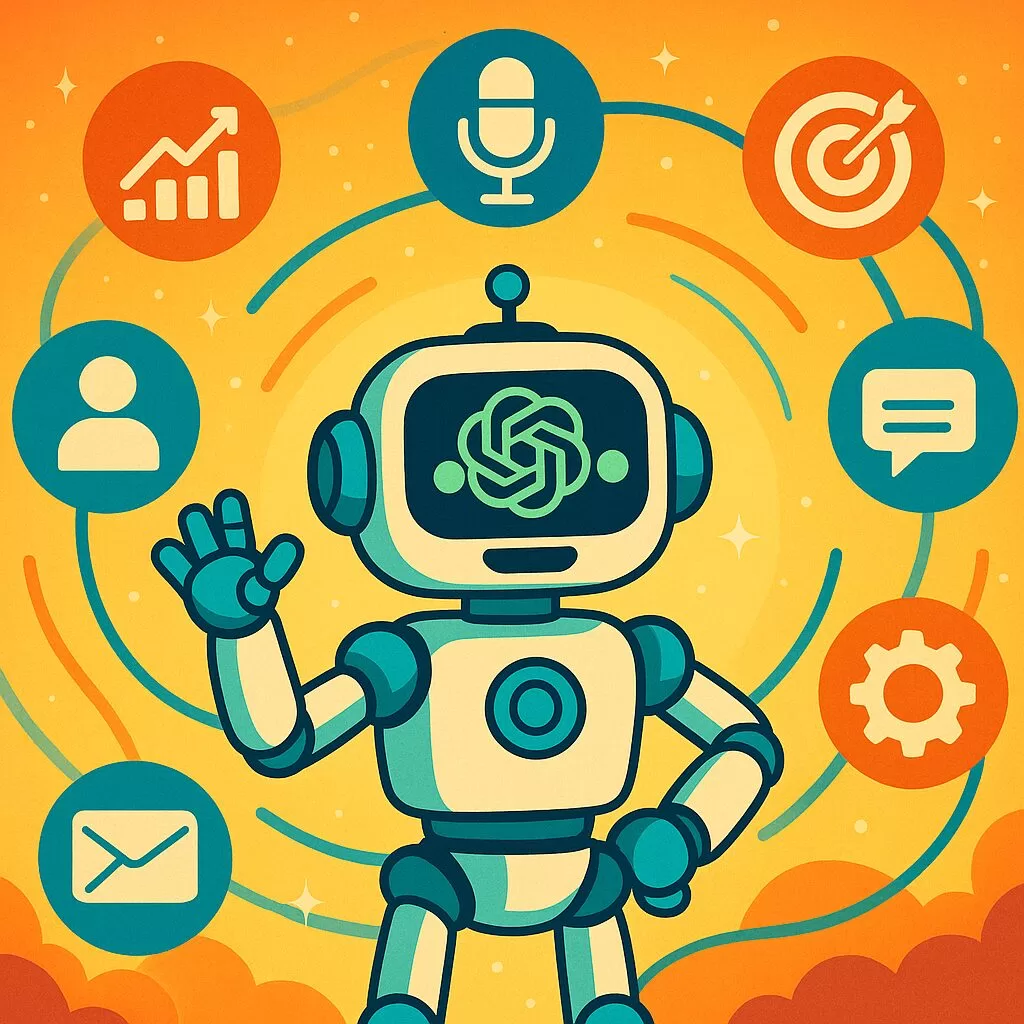
TL;DR — What You Need to Know:
- ChatGPT use cases in 2025 — they’re changing the way we work – and fast
- It’s new capabilities are shockingly useful — from real-time strategy building to smarter email, training, and customer service.
- The tech’s no longer the limiting factor. How you use it is what sets winners apart.
- You don’t need a dev team — just smart prompts, good judgement, and a bit of experimentation.
Welcome to Your New ChatGPT Use Cases in 2025
Something extraordinary is happening with AI — and this time, it’s not just another update. ChatGPT’s latest model has quietly become one of the most powerful tools on the planet, capable of outperforming human professionals in everything from sales role-play to strategic planning.
Here’s what’s changed: 2025’s AI isn’t just faster or more fluent. It’s fundamentally more useful. And while most people are still asking it to write birthday poems or summarise PDFs, smart businesses are doing something entirely different.
They’re solving real problems.
So here are 7 powerful, practical, and slightly mind-blowing ways you can use ChatGPT right now — whether you’re running a startup, scaling a business, or just trying to survive your inbox.
1. The Intelligence Quantum Leap
Let’s start with the big one. GPT-4o — OpenAI’s flagship model for 2025 — doesn’t just understand language. It reasons. It plans. It scores higher than the average human on standardised IQ tests.
And yes, that’s both impressive and terrifying.
But the real win for business? You now have on-demand access to a logic machine that can unpack strategy, simulate market moves, and give brutally clear feedback on your plans — without needing a whiteboard or a 5-hour workshop.
Ask ChatGPT:
“Compare three go-to-market strategies for a mid-priced SaaS product in Southeast Asia targeting logistics firms.”
It’ll give you a side-by-side breakdown faster than most consultants.
Why it matters:
The days of ‘I’ll get back to you after I crunch the data’ are over. You now crunch in real time. Strategy meetings just got smarter — and shorter.
2. Email Management: The Silent Revolution
Email is where good ideas go to die. But what if AI could handle the grunt work — without sounding like a robot?
In 2025, it can. ChatGPT now plugs seamlessly into tools like Zapier, Make.com, and even Outlook or Gmail via APIs. That means you can automate 80% of your email workflow:
- Draft responses in your tone of voice
- Auto-tag or file messages based on content
- Trigger follow-ups without lifting a finger
Real use case:
A boutique agency in Singapore uses ChatGPT to scan all inbound client emails, draft smart replies with custom links, and log actions in Notion. Result? 40% time saved, zero missed follow-ups.
But beware:
Letting AI send emails unsupervised is asking for trouble. Use a “draft-and-review” loop — AI writes it, you approve it.
3. Voice-Powered Strategy: AI That Walks With You
Here’s a glimpse of the future: You’re walking to get kopi. You press and hold your ChatGPT app. You say:
“I’m thinking about launching a mini-course for HR leaders on AI literacy. Maybe bundle it with a coaching session. Can you sketch out a funnel?”
By the time you get back to your desk, it’s done. A structured funnel. Headline ideas. Audience personas. Even suggested pricing tiers.
This is now live.
The new voice interaction mode in ChatGPT feels like talking to a strategist who never gets tired. It remembers what you said, clarifies details, and adapts based on your feedback. Use it during your commute. In the gym. While cooking.
Think about it:
Your best thinking doesn’t always happen at your desk. Now, it doesn’t have to.
4. Sales Role-Play (That Doesn’t Suck)
Sales teams have always known the value of practice. But let’s be honest: traditional role-play is awkward, slow, and often skipped.
Now imagine this: You open ChatGPT and say:
“Pretend you’re a CFO pushing back on my pitch for enterprise expense software. Hit me with your top three objections.”
It does. Relentlessly. Then you tweak it:
“Now play a more sceptical CFO. Use financial jargon. Be unimpressed.”
It does that too.
Why it works:
There’s no fear of judgement. No awkwardness. Just high-impact reps that sharpen your message and steel your nerves.
Results?
One founder I know used this daily before calls — and closed 4 out of 5 deals that quarter. That’s not hype. That’s practice made perfect.
5. Marketing Psychology at Scale
Your customers are constantly telling you what they care about. But the signal’s buried in reviews, chats, complaints, comments, and survey feedback.
ChatGPT is now ridiculously good at sifting through this mess and surfacing insights — emotional tone, patterns in word choice, common objections, even specific desires.
Example prompt:
“Analyse these 250 customer reviews. What do customers love most? What words do they use to describe our product? What are their biggest frustrations?”
What you get is a heatmap of customer psychology.
Smart marketers use this to:
Reframe messaging
Write landing pages in the customer’s voice
Identify overlooked objections early
Bonus trick:
Feed this analysis into your ad copywriting prompts. CTRs go up. Every. Single. Time.
6. 24/7 Customer Engagement — That Doesn’t Feel Robotic
We’ve all used chatbots that sound like your uncle trying to be cool. Not anymore.
With GPT-4o and custom instructions, you can now build a digital agent that actually sounds like your brand, asks smart follow-ups, and guides users toward decisions.
Imagine this:
You run an e-commerce site. A customer asks about shipping options. Instead of a static FAQ or slow email reply, ChatGPT:
- Asks where they’re based
- Calculates delivery timelines
- Recommends a bundled offer
- Logs the lead to your CRM
All in real time.
Result?
One online skincare brand reported a 50% increase in cart completions just by switching to an AI-led chat system.
The real kicker? Customers prefer talking to it.
7. Your Digital Ops Manual — Finally Done
Every business struggles with documenting processes. SOPs are boring, messy, and constantly out of date.
But ChatGPT? It lives for this.
Feed it rough notes, voice memos, old docs — and it turns them into clear, structured workflows.
Now take it one step further:
Set up a private knowledge base where your team can ask questions naturally and get precise answers.
“What’s our refund process for EU customers?”
“How do I update a client billing profile?”
“What’s the Slack etiquette for our sales team?”
ChatGPT answers. With citations.
Training time drops. Mistakes go down. New hires ramp up faster.
Best of all?
It gets smarter the more your team uses it.
So… What’s Stopping You Trying These ChatGPT Use Cases in 2025?
Every use case in this article is live. Affordable. And 100% usable today. No code. No dev team. No six-month roadmap.
Just smarter thinking — and a willingness to try.
So here’s the real question:
What’s your excuse for not using AI like this yet… and how long can you afford to wait?
You may also like:
- AI in Email Marketing: A New Dawn
- Omptimise Your Sales Strategy with ChatGPT: Top AI Prompts for Sellers
- Transforming Sales Coaching in Asia With AI
- Or try these out now on the free version of ChatGPT by tapping here.
Author
Discover more from AIinASIA
Subscribe to get the latest posts sent to your email.
Business
AI Just Killed 8 Jobs… But Created 15 New Ones Paying £100k+
AI is eliminating roles — but creating new ones that pay £100k+. Here are 15 fast-growing jobs in AI and how to prepare for them in Asia.
Published
1 day agoon
May 13, 2025By
AIinAsia
TL;DR — What You Need to Know:
- AI is replacing roles in moderation, customer service, writing, and warehousing—but it’s not all doom.
- In its place, AI created jobs paying £100k: prompt engineers, AI ethicists, machine learning leads, and more.
- The winners? Those who pivot now and get skilled, while others wait it out.
Let’s not sugar-coat it: AI has already taken your job.
Or if it hasn’t yet, it’s circling. Patiently. Quietly.
But here’s the twist: AI isn’t just wiping out roles — it’s creating some of the most lucrative career paths we’ve ever seen. The catch? You’ll need to move faster than the machines do.
The headlines love a doomsday spin — robots stealing jobs, mass layoffs, the end of work. But if you read past the fear, you’ll spot a very different story: one where new six-figure jobs are exploding in demand.
And they’re not just for coders or people with PhDs in quantum linguistics. Many of these jobs value soft skills, writing, ethics, even common sense — just with a new AI twist.
So here’s your clear-eyed guide:
- 8 jobs that AI is quietly (or not-so-quietly) killing
- 15 roles growing faster than a ChatGPT thread on Reddit — and paying very, very well.
8 Jobs AI Is Already Eliminating (or Shrinking Fast)
1. Social Media Content Moderators
Remember the armies of humans reviewing TikTok, Instagram, and Facebook posts for nudity or hate speech? Well, they’re disappearing. TikTok now uses AI to catch 80% of violations before humans ever see them. It’s faster, tireless, and cheaper.
Most social platforms are following suit. The remaining humans deal with edge cases or trauma-heavy content no one wants to automate… but the bulk of the work is now machine-led.
2. Customer Service Representatives
You’ve chatted with a bot recently. So has everyone.
Klarna’s AI assistant replaced 700 human agents in one swoop. IKEA has quietly shifted call centre support to fully automated systems. These AI tools handle everything from order tracking to password resets.
The result? Companies save money. Customers get 24/7 responses. And entry-level service jobs vanish.
3. Telemarketers and Call Centre Agents
Outbound sales? It’s been digitised. AI voice systems now make thousands of simultaneous calls, shift tone mid-sentence, and even spot emotional cues. They never need a lunch break — and they’re hard to distinguish from a real person.
Companies now use humans to plan campaigns, but the actual calls? Fully automated. If your job was cold-calling, it’s time to reskill — fast.
4. Data Entry Clerks
Manual input is gone. OCR + AI means documents are scanned, sorted, and uploaded instantly. IBM has paused hiring for 7,800 back-office jobs as automation takes over.
Across insurance, banking, healthcare — companies that once hired data entry clerks by the dozen now need just a few to manage exceptions.
5. Retail Cashiers
Self-checkout kiosks were just the start. Amazon Go stores use computer vision to eliminate the checkout experience altogether — just grab and go.
Walmart and Tesco are rolling out similar models. Even mid-sized retailers are using AI to reduce cashier shifts by 10–25%. Humans now restock and assist — not scan.
6. Warehouse & Fulfilment Staff
Amazon’s warehouses are a case study in automation. Autonomous robots pick, pack, and ship faster than any human.
The result? Fewer injuries, more efficiency… and fewer humans.
Even smaller logistics firms are adopting warehouse AI, as costs drop and robots become “as-a-service”.
7. Translators & Content Writers (Basic-Level)
Generative AI is fast, multilingual, and on-brand. Duolingo replaced much of its content writing team with GPT-driven systems.
Marketing teams now use AI for product descriptions, blogs, and ads. Humans still do strategy — but the daily word count? AI’s job now.
8. Entry-Level Graphic Designers
AI tools like Midjourney, Ideogram, and Adobe Firefly generate visuals from a sentence. Logos, pitch decks, ad banners — all created in seconds. The entry-level designer who used to churn out social graphics? No longer essential.
Top-tier creatives still thrive. But production design? That’s already AI’s turf.
Are you futureproofed—or just hoping you’re not next?
15 AI-Driven Jobs Now Paying £100k+
Now for the exciting bit. While AI clears out repetitive roles, it also opens new high-paying jobs that didn’t exist 3 years ago.
These aren’t sci-fi ideas. These are real jobs being filled today — many in Singapore, Australia, India, and Korea — with salaries to match.
1. Machine Learning Engineer
The architects of AI itself. They build the algorithms powering everything from fraud detection to self-driving cars.
Salary: £85k–£210k
Needed: Python, TensorFlow/PyTorch, strong maths. Highly sought after across finance, healthcare, and Big Tech.
2. Data Scientist
Translates oceans of data into actual insights. Think Netflix recommendations, pricing strategies, or disease forecasting.
Salary: £70k–£160k
Key skills: Python, SQL, R, storytelling. A killer combo of tech + communication.
3. Prompt Engineer
No code needed — just words.
They craft the perfect prompts to steer AI models like ChatGPT toward accurate, helpful results.
Salary: £110k–£200k+
Writers, marketers, and linguists are all pivoting into this role. It’s exploding.
4. AI Product Manager
You don’t build the AI — you make it useful.
This role bridges business needs and tech teams to launch products that solve real problems.
Salary: £120k–£170k
Ideal for ex-consultants, startup leads, or technical PMs with an eye for product-market fit.
5. AI Ethics / Governance Specialist
Someone has to keep the machines honest. These specialists ensure AI is fair, safe, and compliant.
Salary: £100k–£170k
Perfect for lawyers, philosophers, or policy pros who understand AI’s social impact.
6. AI Compliance / Audit Specialist
GDPR. HIPAA. The EU AI Act.
These specialists check that AI systems follow legal rules and ethical standards.
Salary: £90k–£150k
Especially hot in finance, healthcare, and enterprise tech.
7. Data Engineer / MLOps Engineer
Behind every smart model is a ton of infrastructure.
Data Engineers build it. MLOps Engineers keep it running.
Salary: £90k–£140k
You’ll need DevOps, cloud computing, and Python chops.
8. AI Solutions Architect
The big-picture thinker. Designs AI systems that actually work at scale.
Salary: £110k–£160k
In demand in cloud, consulting, and enterprise IT.
9. Computer Vision Engineer
They teach machines to see.
From autonomous cars to medical scans to supermarket cameras — it’s all vision.
Salary: £120k+
Strong Python + OpenCV/TensorFlow is a must.
10. Robotics Engineer (AI + Machines)
Think factory bots, surgical arms, or drone fleets.
You’ll need both hardware knowledge and machine learning skills.
Salary: £100k–£150k+
A rare mix = big pay.
11. Autonomous Vehicle Engineer
Still one of AI’s toughest challenges — and best-paid verticals.
Salary: £120k+
Roles in perception, planning, and safety. Tesla, Waymo, and China’s Didi all hiring like mad.
12. AI Cybersecurity Specialist
Protect AI… with AI.
This job prevents attacks on models and builds AI-powered threat detection.
Salary: £120k+
Perfect for seasoned security pros looking to specialise.
13. Human–AI Interaction Designer (UX for AI)
Humans don’t trust what they don’t understand.
These designers make AI usable, friendly, and ethical.
Salary: £100k–£135k
Great path for UXers who want to go deep into AI systems.
14. LLM Trainer / Model Fine-tuner
You teach ChatGPT how to behave. Literally.
Using reinforcement learning, you align models with human values.
Salary: £100k–£180k
Ideal for teachers, researchers, or anyone great at structured thinking.
15. AI Consultant / Solutions Specialist
Advises companies on where and how to use AI.
Part analyst, part strategist, part translator.
Salary: £120k+
Management consultants and ex-founders thrive here.
The Bottom Line: You Don’t Need to Fear AI. You Need to Work With It.
If AI is your competition, you’re already behind. But if it’s your co-pilot, you’re ahead of 90% of the workforce.
This isn’t just about learning to code. It’s about learning to think differently.
To communicate with machines.
To spot where humans still matter — and amplify that with tech.
Because while AI might be killing off 8 jobs…
It’s creating 15 new ones that pay double — and need smart, curious, adaptable people.
So—
Will you let AI automate you… or will you get paid to run it?
You may also like:
AI Upskilling: Can Automation Boost Your Salary?
How Will AI Skills Impact Your Career and Salary in 2025?
Will AI Kill Your Marketing Job by 2030?
Author
Discover more from AIinASIA
Subscribe to get the latest posts sent to your email.

FAKE FACES, REAL CONSEQUENCES: Should NZ Ban AI in Political Ads?

7 Mind-Blowing New ChatGPT Use Cases in 2025

AI Just Killed 8 Jobs… But Created 15 New Ones Paying £100k+
Trending
-

 Marketing3 weeks ago
Marketing3 weeks agoPlaybook: How to Use Ideogram.ai (no design skills required!)
-

 Life2 weeks ago
Life2 weeks agoWhatsApp Confirms How To Block Meta AI From Your Chats
-

 Tools4 days ago
Tools4 days agoEdit AI Images on the Go with Gemini’s New Update
-

 Business1 day ago
Business1 day agoAI Just Killed 8 Jobs… But Created 15 New Ones Paying £100k+
-

 Business2 weeks ago
Business2 weeks agoChatGPT Just Quietly Released “Memory with Search” – Here’s What You Need to Know
-

 Life1 day ago
Life1 day ago“Sounds Impressive… But for Whom?” Why AI’s Overconfident Medical Summaries Could Be Dangerous
-

 Life10 hours ago
Life10 hours ago7 Mind-Blowing New ChatGPT Use Cases in 2025
-

 Life1 week ago
Life1 week agoGeoffrey Hinton’s AI Wake-Up Call — Are We Raising a Killer Cub?



